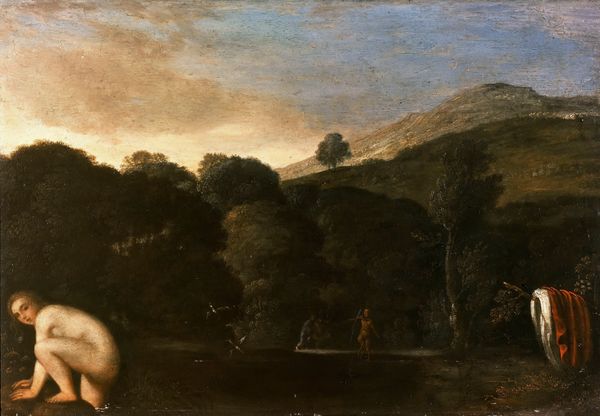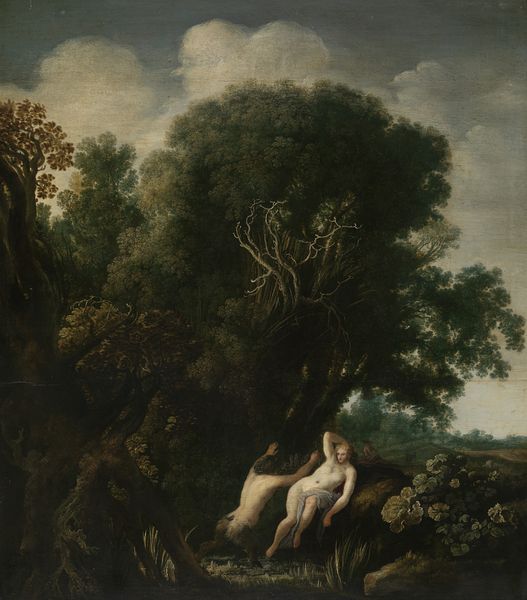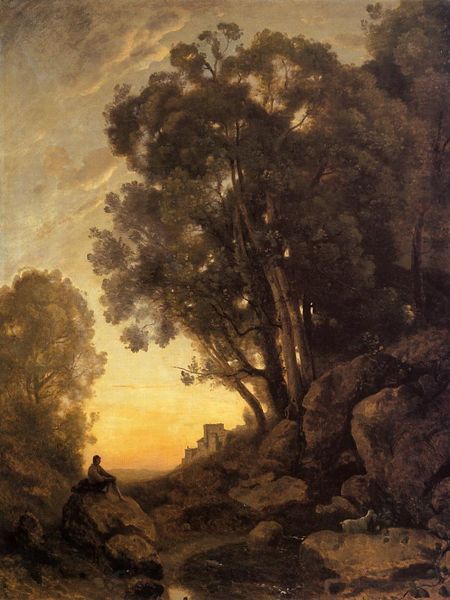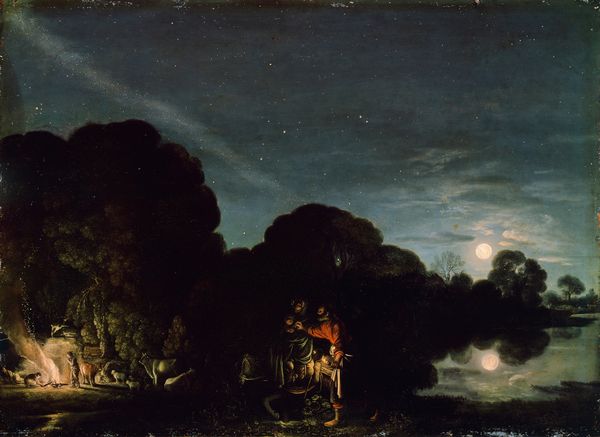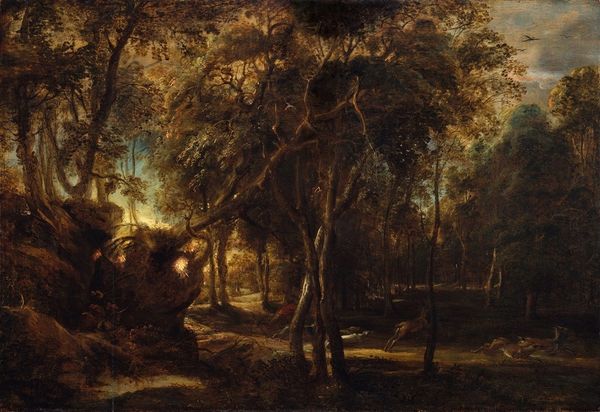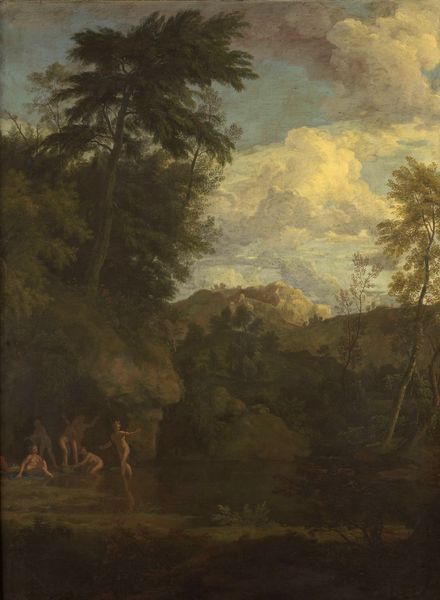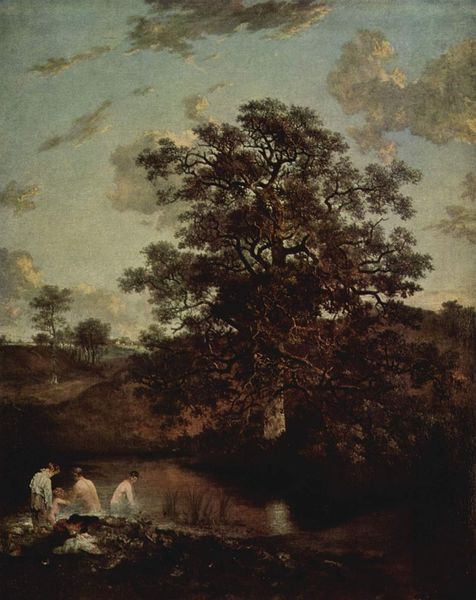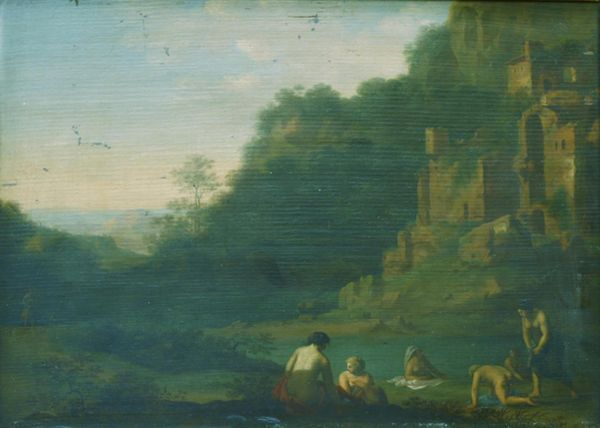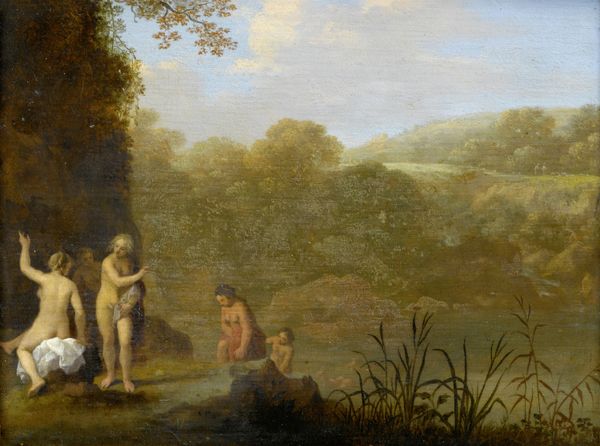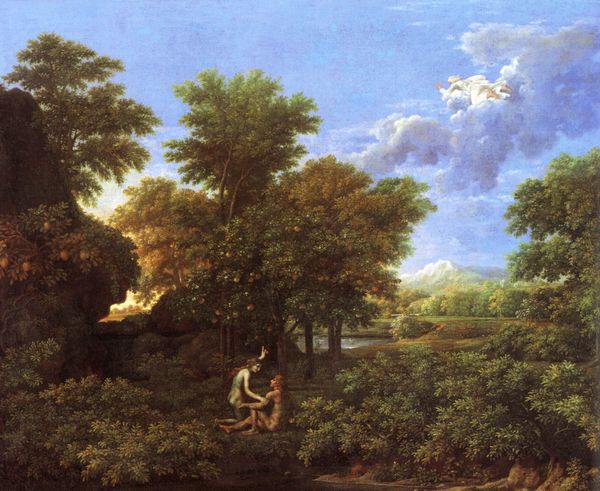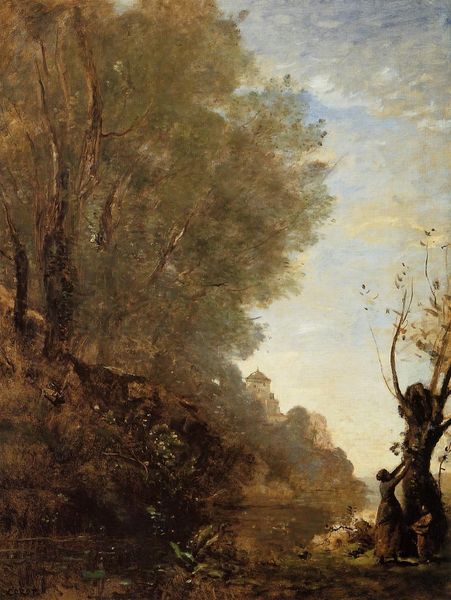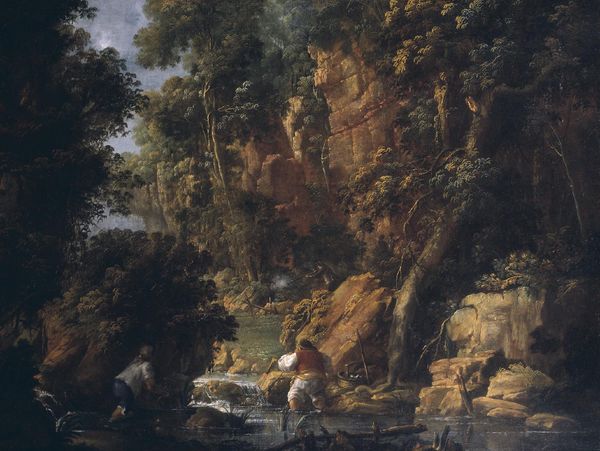
oil-paint
#
portrait
#
baroque
#
oil-paint
#
landscape
#
figuration
#
oil painting
#
neo expressionist
#
history-painting
#
nude
Copyright: Public domain
Editor: Adam Elsheimer’s "Venus and Cupid," painted around 1605, really strikes me. The oil paint gives the scene this almost dreamlike, hazy quality. It’s a small painting, but it feels very intimate. How do you interpret this work, considering its place in history? Curator: Considering Elsheimer's historical context, it's interesting how he integrates classical mythology with a more accessible, human dimension. The figures of Venus and Cupid aren't these distant, idealized gods. Instead, they inhabit a very tangible, almost mundane landscape. Think about the political climate in Rome at that time, a real shift happening towards more personal forms of religious experience and the patron's aspirations for their imagery. Does that resonate with how you perceive the painting? Editor: Yes, I do get that. It makes it feel less like a grand statement and more like a private moment. Did the rise of private art collections affect subject choices? Curator: Precisely! As wealthy patrons increasingly sought art for their private enjoyment rather than public display, the subjects and styles shifted towards themes that emphasized sensuality, emotion, and intimacy. And notice Elsheimer's detailed rendering of nature. It wasn't just background scenery, it became increasingly significant, reflecting a broader societal interest in the natural world and this painting finds it way into various collections. Editor: That’s fascinating. I hadn't fully appreciated the social influence on these intimate mythological scenes. Curator: It is crucial to remember that even ostensibly private art had public implications, reinforcing the patron's social status and shaping cultural values. What do you take away from understanding the social and historical factors involved? Editor: I guess I see the artwork with much greater appreciation now, it’s part of larger history. It adds new dimensions to it.
Comments
No comments
Be the first to comment and join the conversation on the ultimate creative platform.
